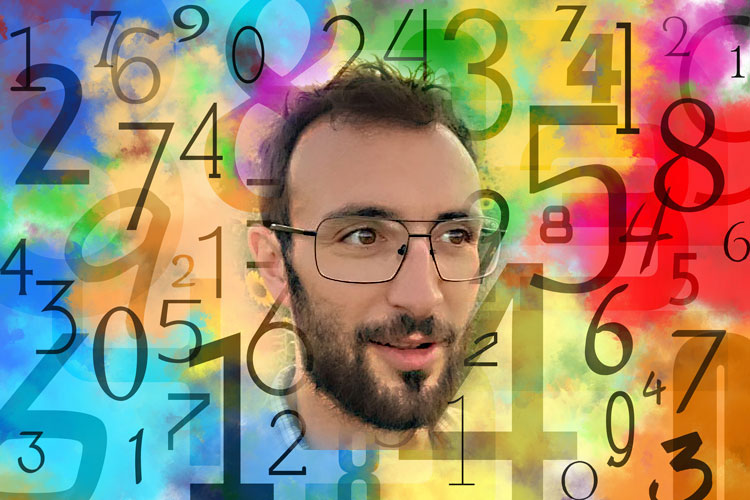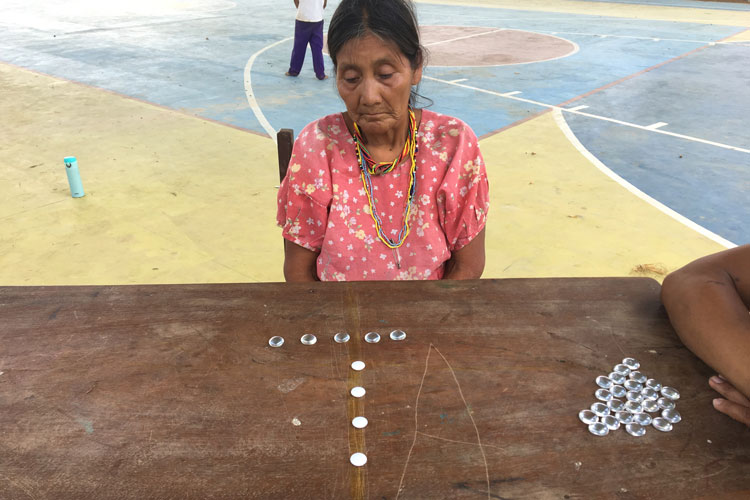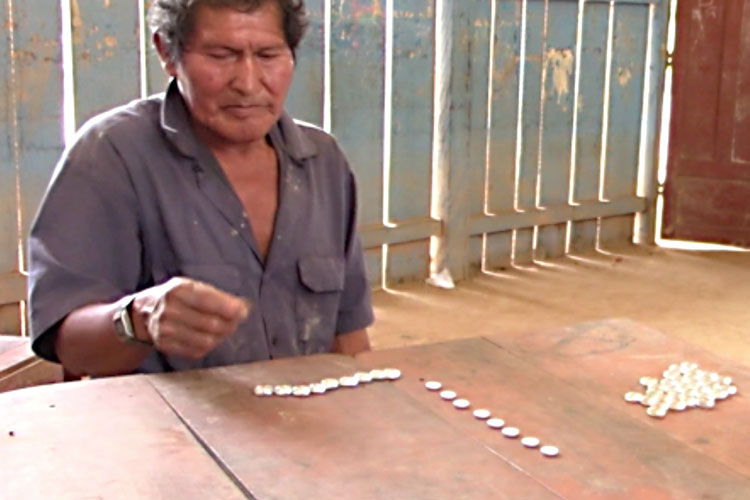Our Mathematical Reasoning is Shaped by Language and Culture, Studies Show

Some cultures are fixated on numbers. Others don’t even have words for numbers. And then there’s Bolivia’s Indigenous Tsimane’ community, which has members who can count indefinitely, and others who can’t count beyond the “number words” they know, according to a new UC Berkeley study.
The findings, published today, Feb. 8, in the Psychological Science journal, suggest that language is integrally tied to numerical cognition. They challenge long-held beliefs that humans share an innate system of thinking about and organizing numbers.
“Our finding provides the clearest evidence to date that number words play an active role in people’s ability to represent exact quantities and supports the broader claim that language can enable new conceptual abilities,” said study lead author Benjamin Pitt, a postdoctoral fellow in UC Berkeley’s Computation and Language Lab.
For the experiment, two dozen Tsimane’ study participants who had little formal schooling were shown a group of objects, say, four buttons, and asked to replicate what they saw using different objects, like glass beads. Turns out, participants could only match the exact number of objects if the amount was within the range of number words they knew.
Co-authors of the study are Steven Piantadosi, an assistant professor of psychology at UC Berkeley, and Edward Gibson, a professor of brain and cognitive sciences at the Massachusetts Institute of Technology.

In previous findings, published in the journal Science Advances, Pitt and fellow researchers show that a directional bias in organizing numerical information among the Tsimane’ people is also cultural, rather than innate.
For example, while children and adults in many industrialized countries organize time, size and numbers from left to right (think calendars, graphs and tape measures), Tsimane’ people feel free to organize them in either direction.
In that experiment, each participant received a set of five cards. Each card in the set showed a different number of dots. A card with, say, five dots, was then placed in the middle of a strip of Velcro, and study participants were asked to arrange their cards, according to their numerical value, on either side of the middle card.
Results showed that Tsimane’ study participants were just as likely to organize the cards from right to left as they were from left to right. This was true not just for numbers, but also for cards that represented size and time, such as cards showing fruit ripening over time.
Berkeley News talked to Pitt about his work on how language and culture shape our perception of numbers, time, space and other abstract phenomena.
Berkeley News: Your research revolves around abstract concepts. What questions are you hoping to answer?
Pitt: Abstract concepts are things we cannot see or hear or touch, like time, for example. You can’t see time. You can’t touch it. The same goes for numbers. We think and talk about time and numbers constantly. But they’re abstract. So how do we make sense of them? One answer is that we use space to make them tangible — thinking of them along a line from left to right or from top to bottom. My research looks at the root of these types of concepts by studying how they vary across cultures, age groups and even across individuals within a group.
What theories about the role of language in human cognition are you challenging?
There’s a longstanding debate about the role that language plays in thinking, and people have strong opinions on both sides. Some argue that language is mainly for expressing thoughts, while others contend that language can actually shape our thoughts.
The cool thing is, we can test these hypotheses using number concepts because not all cultures have words for numbers. Most famously, the Pirahã people of Brazil have no words for any exact numbers, not even the number 1. This is usually hard for Americans to believe because we’re so awash in numbers all the time. But these linguistic differences give us a way to test whether exact number words are needed to have exact number thoughts. They also pose the question of whether language can bestow on us a whole new conceptual ability.
Our findings have helped to challenge the idea that people’s concept of numbers is innate or universal across all cultures. For example, some people have hypothesized that the brain has a built-in mechanism for counting that does not require language. My work with Tsimane’, as well as other scholars’ work, suggests otherwise.
What makes the Tsimane’ people ideal subjects for this kind of experiment?
Previous studies have compared the numerical abilities of people from radically different cultures and languages, like comparing U.S. undergraduates and Indigenous Amazonians. That work is very cool, but it’s also controversial because it’s hard to know why different groups have different numerical abilities. It could be due to differences in their “number language” or to differences in their cultural habits or environment.
With the Tsimane’, we could avoid this problem because — unlike American or Pirahã adults — Tsimane’ adults vary from one another in how well they can count using number words. Some can count indefinitely, while others are unsure which number comes after 6 or 11 or 17. This variation allowed us to test the relationship between number words and number concepts within the same group.
How was it, working with the Tsimane’ in the remote Bolivian lowlands?
The Tsimane’ people live in the Amazon basin of Bolivia, and to get there is quite a journey. From La Paz, the capital of Bolivia, we took a domestic flight down over the Andes to the lowlands and then drove three hours to the Bolivian town that is closest to the Tsimane’ villages. To get to these remote villages is another adventure and often requires a Jeep, a canoe and some hiking – it was an amazing way to get to work.

And honestly, it was wonderful to get to meet them and work with them. We also worked closely with a team of Tsimane’-Spanish interpreters who were fantastic. They really helped us not only to communicate with the study participants, but provided insights into what life is like growing up in a Tsimane’ community, a very different experience than mine growing up in a suburban U.S. town. I very much hope to go back.
Read the study Exact Number Concepts are Limited to the Verbal Count Range in Psychological Science
